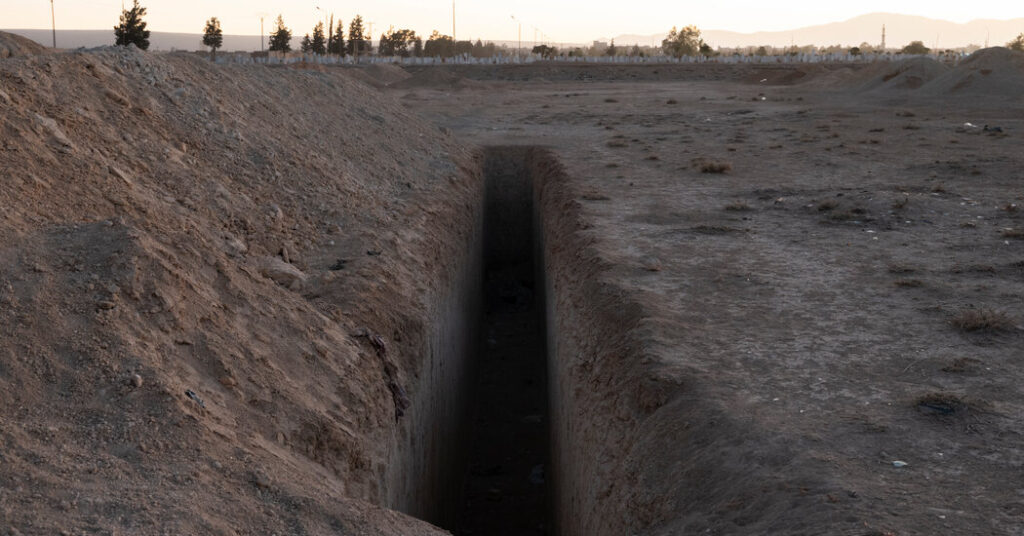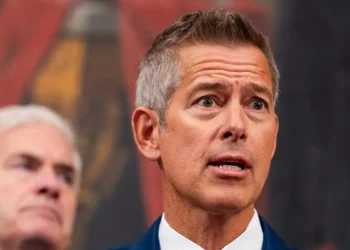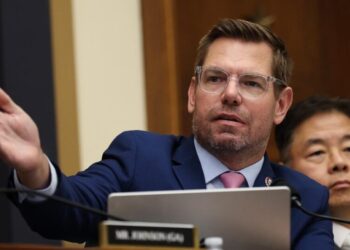The families of the missing no longer come by the dozens each day to the Najha cemetery, looking for the remains of their loved ones and the closure that could bring.
In the days just after the dictator Bashar al-Assad was overthrown in December, they would turn up, sometimes with shovels in hand, intent on digging up the mass grave there marked by mounds of overturned dirt. Eventually, they gave up when they realized they would find little more than bones in body bags and no way to determine who they belonged to.
During the nearly 14-year civil war, tens of thousands of people seen as opponents of the Assad regime were detained by the former authorities and disappeared, many of them executed or killed under torture, according to human rights groups. Hundreds, perhaps thousands, were believed to be hastily buried at the Najha cemetery, which is on the outskirts of the capital, Damascus.
The fate of the missing is an open wound for relatives who spent years in pained silence, wondering what happened to their loved ones.
At least 60 mass graves have been identified across Syria so far, officials said, and new ones are being found regularly. But figuring out who is buried in them is part of a broader and more complex problem for the country’s new leaders, who are trying to bring some measure of accountability and justice for war crimes committed by the Assad regime.
Khaled al-Mishtowli, 36, was one of those who went to Najha soon after the ouster of Mr. al-Assad. He counts the number of missing family members on his fingers: three brothers, his father, three cousins and two aunts.
Mr. al-Mishtowli said he believes they ended up in that mass grave because they disappeared in the area, which is near their homes.
He only wished that those who killed people and threw their bodies into the trenches “had at least buried the people’s ID cards with their bodies,” he said. “At least their families could then know where there are.”
Mr. al-Mishtowli said he still occasionally found himself back at the cemetery. During the Eid holidays, when Muslims visit the graves of their loved ones, he went.
He and many others in the same situation are calling on the government and on international organizations to undertake what officials warn will be a long and painstaking process of exhuming and identifying the bodies.
The new government lacks the technical expertise and forensic capabilities to do that and will need help from international organizations.
The Syrian minister of emergency and disaster management, Raed al-Saleh, has said that about 140,000 Syrians are still missing and unaccounted for, citing human rights organizations.
The full scale of how many people the Assad regime may have killed came into sharper focus when Syria’s prisons were overrun by rebels a year ago as they stormed across the country. They flung open cells and more than 24,000 prisoners spilled out, according to the Syrian Network for Human Rights.
But the families of the missing had expected to find many more.
In some prisons, families and rescue workers spent weeks burrowing into the concrete floors to find what they thought would be underground dungeons holding large numbers of additional prisoners.
They found nothing.
The missing, they realized, would likely be found in the mass graves.
Mr. al-Mishtowli said that his relatives began disappearing from their town, Sayida Zeinab, on the outskirts of Damascus, in 2013 as they ran errands or were on their way home from work. He believes his family members, all Sunni Muslims, were taken by pro-regime Shiite militias that were stationed in the area.
In 2018, his father was taken. By that point, nine relatives had gone missing with no trace.
“We are asking for anyone, international organizations, the United Nations, anyone who can exhume the bodies and identify them,” Mr. al-Mishtowli said.
But exhumations could still be a long way off.
“This is a very long process, one that began now but will unfortunately extend over many years,” said Zeina Shahla, a spokeswoman for a Syrian commission on missing people, a body set up by the government.
The commission will look to international organizations to assist in building technical and forensic capabilities, such as DNA laboratories, she said.
On a summer morning at a Damascus fire station, a group of recruits were beginning their first day of field training by two instructors from the Forensic Anthropology Foundation of Guatemala. The organization has used the expertise it gained from searching for the victims of Guatemala’s 36-year civil war to train teams around the world.
The Guatemalan instructors had buried eight plastic skeletons in an empty dirt lot. The Syrian recruits were scouting the terrain, noting uneven ground or discoloration in the dirt — possible signs of a grave.
Dr. Marwa Thatha, a 30-year-old pharmacist from Damascus, tapped a patch of dirt at the edge of the lot with her foot.
“This could be a mass grave,” she said, her face shielded from the sun by sunglasses, a hat and a face mask tied behind her head scarf with black-and-yellow crime scene tape.
She wrote down her observations in a notebook with the slogan, “Leave the past where it belongs” written on the cover.
“How deep do you think they buried them here?” asked Eman Zaaroor, a 26-year-old from the northern city of Aleppo.
Ms. Zaaroor, who said she had studied chemistry at university and worked with humanitarian aid groups around Aleppo, northern Syria, during the war, enlisted in the training as soon as she heard about it.
For her, and many others, it’s personal.
Two of her relatives are still missing. One was shot and killed along a front line in Aleppo and his body was taken away by regime soldiers, she said.
“I wanted to be part of this so I can first help my family and then my friends and then all of Syria,” Ms. Zaaroor said.
During the training, the recruits learn to look for clues as to what happened to the victims — skills they will need when examining and collecting evidence from real graves.
The recruits dug for hours before beginning to expose the buried plastic skulls. They were instructed to work methodically, lest they disturb any evidence that could be used for future criminal prosecutions.
In the large hole that Ms. Zaaroor had helped dig, they used a hand-held shovel and paintbrush to carefully scrape away dirt and expose more of the fake skull.
“It looks like he was tied up, right?” she said, slowly brushing away dirt to uncover metal wires wrapped around fabric.
Ahmad al-Handouma, a 35-year-old lawyer from Aleppo, noticed a plastic bag emerging from the plastic skull.
“I think they gagged him as well,” he said.
In the past, the United Nations and other international agencies have taken responsibility for exhuming mass graves rather than training local teams to do it, said Karla Quintana, who heads the U.N. Independent Institution on Missing Persons in Syria.
But, she said, that caused a problem because the task often outlasted the international involvement.
“The international community has to help the Syrian authorities to build infrastructure first and to train their people to learn how to eventually do this on their own,” Ms. Quintana said. “Looking for the missing is not easy and it’s not fast. It’s a process and it takes time.”
Raja Abdulrahim reports on the Middle East and is based in Jerusalem.
The post Desperate Search for Missing Syrians Leads to Mass Graves appeared first on New York Times.




